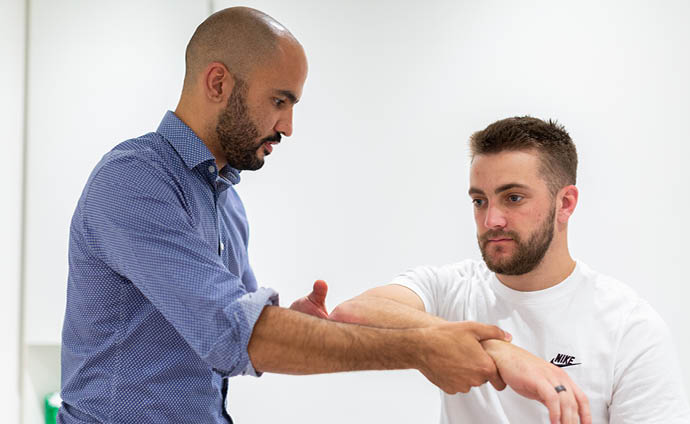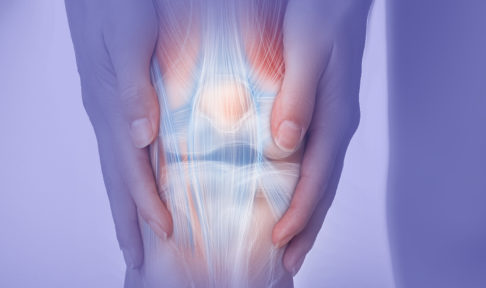Sore arm? You may have tennis elbow. But don’t be misled by the name… tennis elbow doesn’t just refer to an injury caused by playing tennis! There are actually many causes of this condition (technically known as Lateral epicondylitis), so don’t assume that it isn’t the cause of your elbow or arm pain, just because it’s been awhile since you picked up a racket…
A proper assessment by a qualified physio will help you determine whether or not you’re suffering from tennis elbow (and how to treat it), but if you’re looking for a general overview of the condition, including the symptoms, possible causes and treatments, then this is a good start.
What are the symptoms of tennis elbow?
Put simply, tennis elbow refers to pain on the outside of the elbow. If you feel the side of your elbow now, you’ll feel a pointed bone sticking out. This is the attachment site for your tendons and inflammation to this area will cause pain or discomfort.
Research shows there are four main stages of tennis elbow symptoms, as they develop in intensity:
1. To begin with you might experience a faint pain a couple of hours after the activity that causes the issue.
2. Next, it will progress to pain at the end of, or immediately after, that activity.
3. As it progresses, you will experience pain during the activity, which will then intensify even after you stop doing what you’re doing.
4. Finally, if left untreated, you may find yourself in constant pain, regardless of what you’re doing.
So, if it’s not just tennis, what are the causes of tennis elbow?
Essentially the main cause of tennis elbow is overuse of the elbow in some way, shape or form. The condition used to only be attributed to large, unnatural movements (like serving a tennis ball) but nowadays it’s recognised more broadly as overuse or pressure on the forearm or elbow, which causes stress on the tendon on the attachment site on the outside of your elbows. Honestly, it can be caused by a wide variety of movements — from sitting at your desk for prolonged periods with a poor setup[1] , to consistent lifting of heavy objects.
How is tennis elbow treated by a physio?
As is always the case at Spectrum, we will never recommend any sort of treatment without undertaking a thorough assessment first, so we can tailor a personalised treatment plan to suit your body, injury and recovery goals. Back in the day, many practitioners used to treat tennis elbow using steroid injections, but over time, and as research has advanced, most physios will agree this is not the right course of treatment.
While we will always consider each case individually, there are a few common treatments for tennis elbow that we find extremely effective for our patients at Spectrum. They include:
Unlike many other clinics that will need to refer you elsewhere, we offer Shockwave therapy in our London clinic, and include it in our usual appointment cost. When combined with specific exercises, Shockwave can really speed up the tennis elbow recovery process.
Learn more about how Shockwave therapy works.

GameReady is a unique technology designed to quickly reduce inflammation and fast-track the healing process of the injured part of your arm or elbow. Much like Shockwave, it is easily accessible in our London clinic and the cost is included in our normal appointment cost too.
Learn more about how GameReady works.
Once we have utilised Shockwave and GameReady technology, we will generally progress you to another round of exercises (different to the ones used in conjunction with Shockwave). These exercises are specifically designed to correct biomechanic insufficiencies, as with tennis elbow we normally find there are problems around the shoulder and/or postural problems that have led to overload at the elbow that has caused the condition.
The way we do this, broadly speaking, is to assess each individual using a series of ‘holds’, a type of exercise, which may include twisting or pushing on your hand in different directions to see which ‘hold’ hurts, to help us determine exactly which exercises will benefit you most.

How long does tennis elbow take to heal?
It depends on how severe it is and whether or not you seek the appropriate treatment, but on average tennis elbow symptoms last anywhere from two weeks to two years. Studies have shown that nearly 90 per cent of the patients recover within one year, even without any treatment except starting to avoid the activity that causes it — but it will come as no surprise to you that physio treatment will have you recovered in a fraction of the time!
So, what are you waiting for? Book your appointment with one of our qualified physios today and be living pain-free again in no time!



